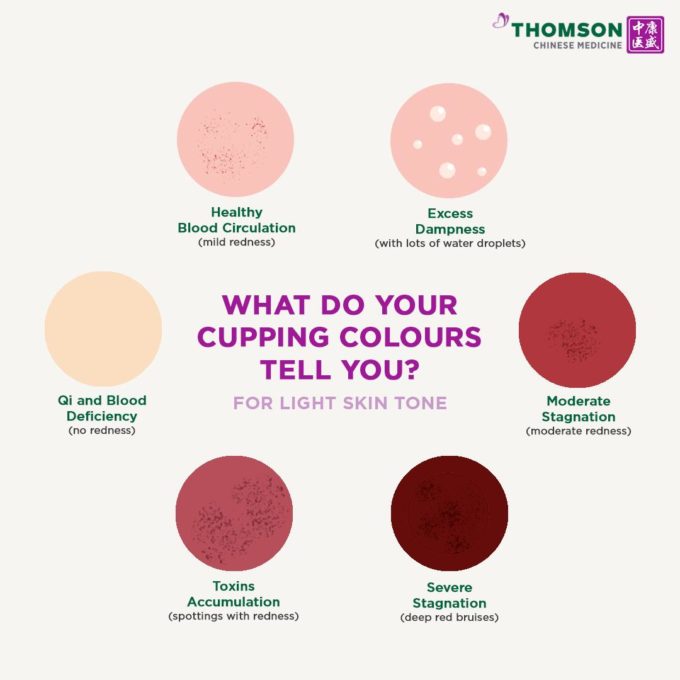What is Cupping?
Cupping therapy, a key component of TCM is a time-honoured practice that dates back thousands of years and is believed to stimulate the flow of Qi (vital energy), enhance blood circulation, and facilitate healing. Think of this as a reverse massage. Suction is created in the cups using fire and quickly placed on the skin. As the cup acts as a vacuum, it pulls up the skin, creating more space in fascia. This encourages more blood and oxygen flow, breaks up scar tissues and muscular knots. It also removes metabolic waste and brings more blood and nutrition to the muscles for faster recovery.
Benefits of TCM Cupping
This old TCM philosophy holds that pain results from the blockage of Qi, blood, or energy. Cupping is therefore a method of clearing this blockage to restore the body’s natural flow of energy and thus alleviating the pain.
Recent research show that cupping therapy helps:
- Muscle relaxation by improving microcirculation, promoting cell repair and angiogenesis in tissues
- Promote healing process via increased local tissue metabolism
- Activate the lymphatic system to drain excess fluids and toxins
- Musculoskeletal pain: Chronic lower back pain, neck pain and fibromyalgia
- Digestive problems: Bloating, gastric reflux and constipation conditions
- Improving recovery: Cough, asthma and common cold

Types of Cupping Therapy in Singapore
At Thomson Chinese Medicine, we use traditional fire cupping with glass cups to do either dry cupping or wet cupping.
Dry cupping
Fire cupping 火罐 is when a small cotton fire soaked in alcohol is lit up, inserted into the glass cup for 1-2 seconds, quickly removed and cups are swiftly placed onto the body. These glass cups are placed over several areas to create a vacuum that lifts the soft tissue and creates an upward stretch within the muscle and fascia.
- Stationary cupping 留罐 – You will feel a slightly tight sensation and a suction around the cupped area. The cups are usually left on the body for about 10 minutes.
- Gliding cupping 走罐 – Oil is applied onto the body and the cups are pushed gently along meridians of the body for about 10 minutes. This technique can cover a larger area more quickly hence it is used on the back and thigh areas.
Wet cupping
This is a type of bloodletting cupping. Small punctures are made in specific areas of the body using a specialized lancet needling device followed by stationary cupping on the point. This will allow the stagnated blood to come out through the lacerated skin and collect in the cups. This is similar to the bloodletting technique called “Hijama”, however, we focus more on the acupuncture points along the meridian channels.

Understanding Colour Changes
Seen purplish circles on athletes before?
Yes, you may get some of those too. But fret not! It is common for cupping to leave distinctive small, circular bruises on the areas where the cups were applied, and it is usually painless.
These cupping marks are discoloration of the skin due to broken blood vessels just beneath the skin, much like a bruise. This indicates the level of blood and Qi stagnation, toxin accumulation, or dampness accumulation in your body. The color and pattern of the marks reflect the level of stagnation in that area. The darker the color, the more stagnation present.



